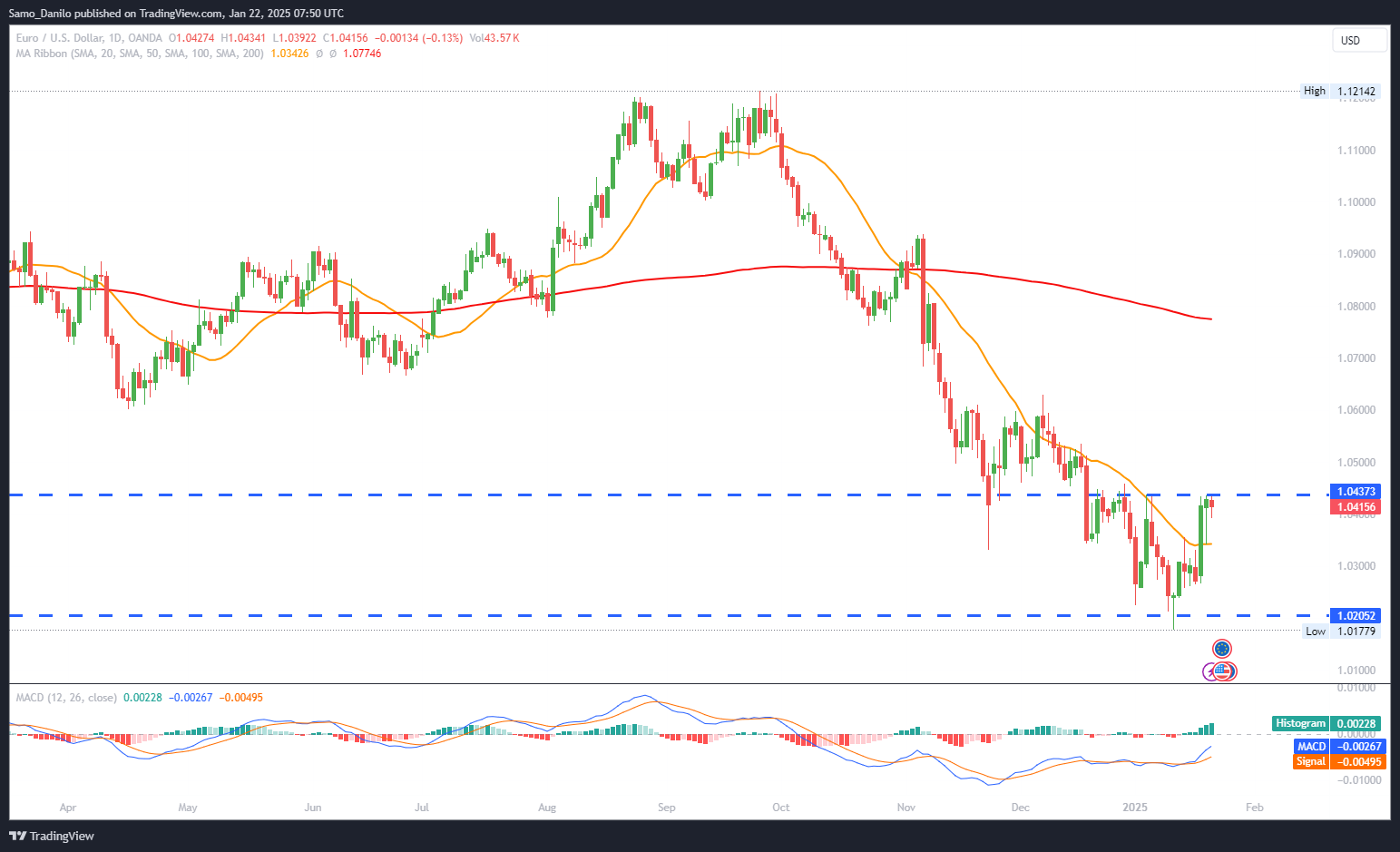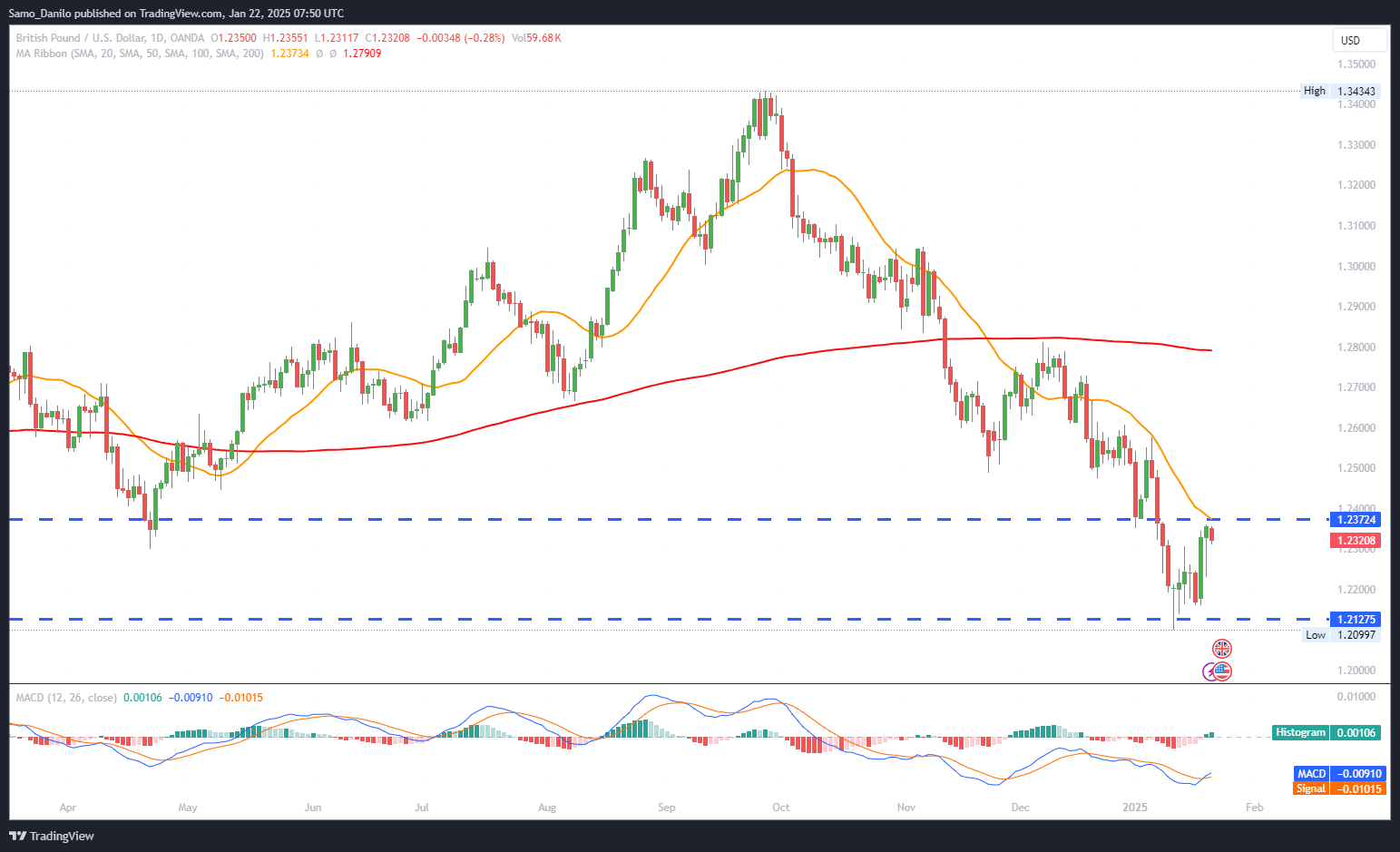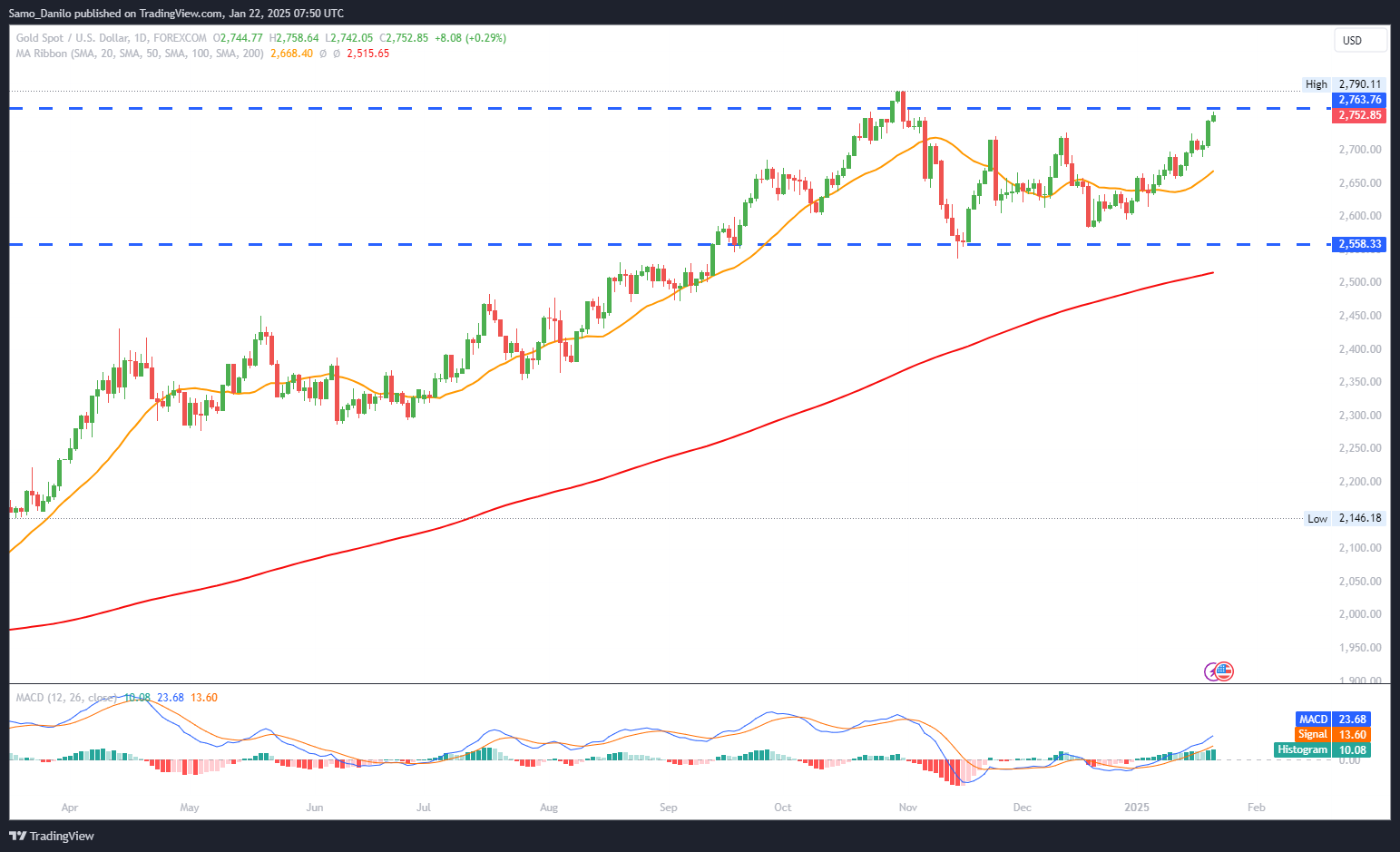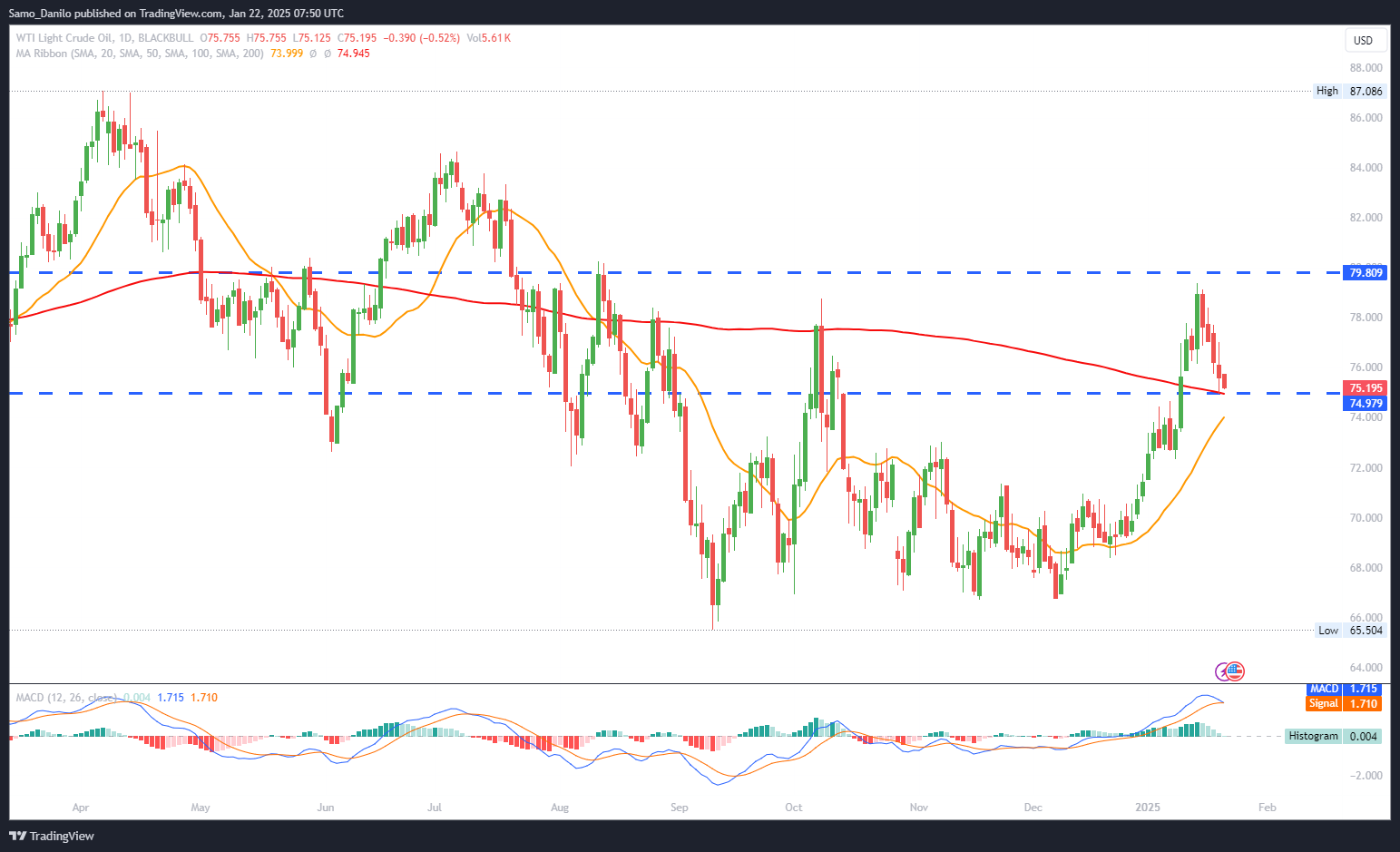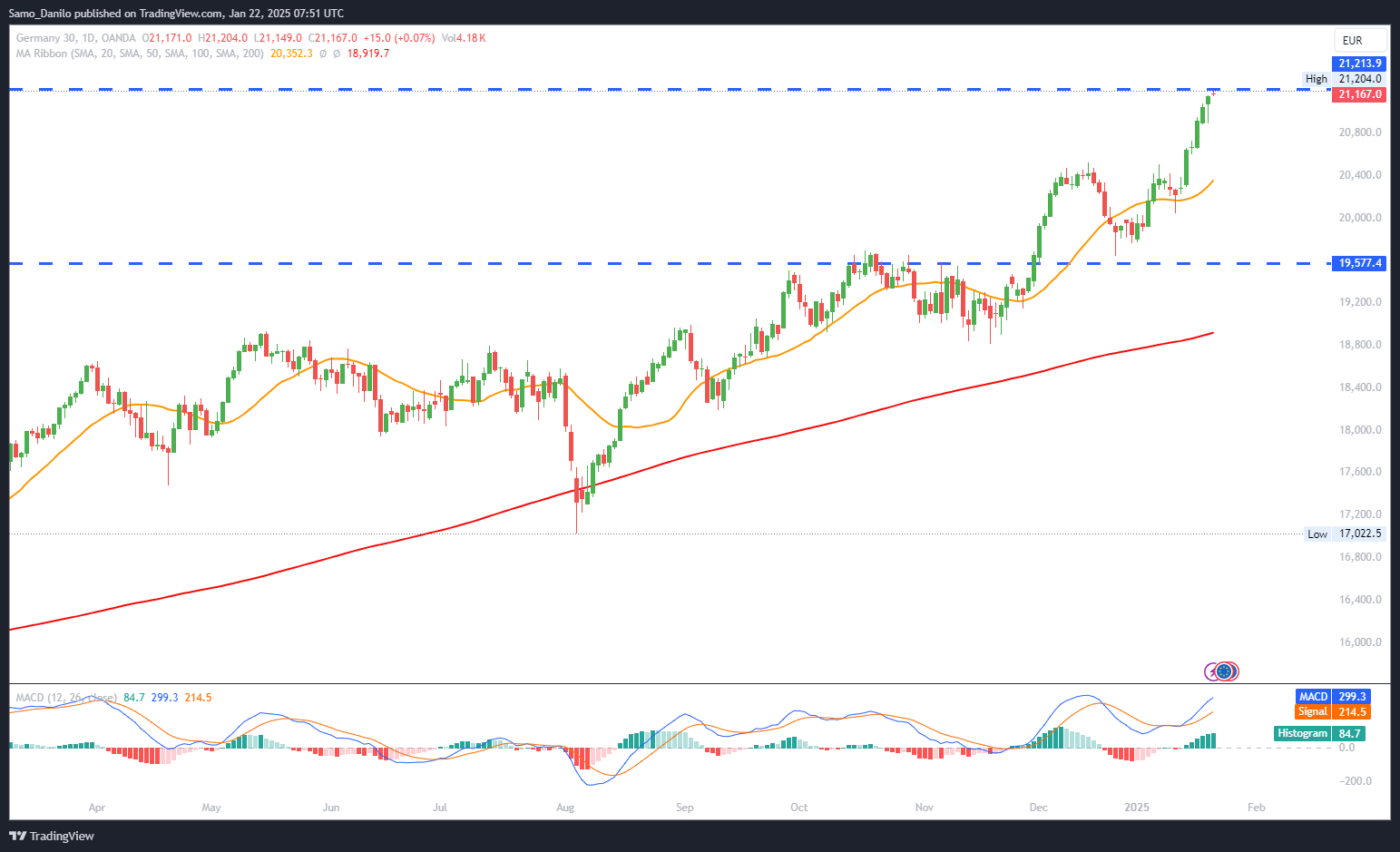EURUSD
- EUR/USD Price: The EUR/USD pair remains under pressure during Wednesday’s European session, trading near 1.0400. The US Dollar’s rebound, fueled by President Trump’s tariff threats, continues to weigh on the Euro, limiting any meaningful recovery attempts.
- ECB Stournaras: ECB policymaker Yannis Stournaras reiterated that the ECB's interest rates should approach 2% by the end of the year, maintaining his earlier stance advocating for a series of rate cuts. This dovish outlook reinforces market expectations of continued monetary easing from the ECB.
- EU-US Trade Relations: European Commission President Ursula von der Leyen stressed the critical importance of maintaining stable EU-US trade relations. With €1.5 trillion in trading volume and significant transatlantic investment at stake, disruptions could have substantial economic implications for both sides.
- ECB Vujcic: ECB policymaker Boris Vujcic commented that market expectations for additional rate cuts are reasonable, with risks around inflation appearing broadly balanced. These statements suggest a cautious but supportive stance for further monetary easing.
- ECB Speeches: A quieter session is expected for the Eurozone on Wednesday, with no significant economic data scheduled. However, markets will closely monitor speeches by ECB Governing Council members and President Christine Lagarde at the World Economic Forum in Davos for potential policy insights.
Closing statement: The EUR/USD remains under bearish pressure amid a stronger US Dollar and dovish ECB commentary. Investors should watch for any shifts in tone from ECB officials at Davos, as well as developments in EU-US trade relations, for fresh market drivers.
GBPUSD
- GBP/USD Price: The GBP/USD pair halts its upward momentum and edges lower toward 1.2300 in early European trading on Wednesday. Renewed US Dollar strength and waning bullish sentiment weigh on the Cable's performance after a brief recovery in the past two sessions.
- Trump’s Tariff Remarks: US President Donald Trump confirmed that universal tariff hikes remain under consideration but noted, "We are not ready for that yet." This ambiguity surrounding US trade policy has sparked caution in global markets, indirectly affecting the GBP/USD pair.
- UK Labor Market: The latest data from the UK revealed a rise in the ILO Unemployment Rate to 4.4%, coupled with the steepest drop in payroll numbers since November 2020. These signs of labor market softening raise concerns about the broader UK economic outlook.
- BoE Rate Cut: The Bank of England is widely expected to lower its key interest rate by 25 basis points to 4.5% during its February 6 meeting. Anticipation of monetary easing continues to dampen demand for the British Pound, adding downside pressure to GBP/USD.
- Limited Announcements: With only low-tier UK data on Wednesday’s economic calendar, traders are expected to shift their focus to developments during the US trading session. Headlines related to US economic policy and global risk sentiment could influence the pair's direction.
Closing statement: The GBP/USD remains under pressure amid weak UK labor market data and expectations of a BoE rate cut. Uncertainty surrounding Trump’s tariff policies could further drive volatility. Traders should monitor upcoming US headlines for additional directional cues.
XAUUSD
- Gold Prices: Gold prices continue their upward momentum for the third consecutive day on Wednesday, breaching the $2,750 level during the European session. This marks the highest level since early November, supported by robust safe-haven demand.
- Trump’s Tariff Threats: US President Donald Trump announced plans for a 10% tariff on China over fentanyl sales, effective February 1, and hinted at future tariffs on the European Union. These developments fueled risk aversion and added to Gold’s appeal as a safe-haven asset.
- Fed Rate Cut Speculation: Signs of easing US inflation have revived market bets that the Federal Reserve could consider rate cuts by the end of the year. This expectation has led to a decline in US Treasury bond yields, further boosting the non-yielding Gold price.
- Trade War Fears: Risk sentiment soured as trade war fears escalated. Chinese Vice Premier Ding Xuexiang, speaking at the World Economic Forum in Davos, warned that “no one wins in a trade war.” The renewed tensions have amplified global economic uncertainties, benefitting Gold.
- Market Focus: Traders are closely monitoring Trump’s tariff announcements and broader trade policies for their potential impact on market sentiment. Developments in these areas are expected to influence the US Dollar and Gold prices in the near term.
Closing statement: Gold’s rally is underpinned by escalating trade war fears, lower US Treasury yields, and renewed safe-haven demand. Traders should keep an eye on further tariff-related announcements and Fed policy signals for their impact on XAU/USD. The metal remains well-supported above $2,750, with room for further upside if risk aversion persists.
CRUDE OIL
- WTI Oil Price: West Texas Intermediate (WTI), the benchmark for US crude oil, is trading around $75.35 on Wednesday, reflecting ongoing bearish sentiment amid geopolitical and policy developments.
- National Energy Emergency: U.S. President Trump announced plans to declare a national energy emergency, pledging to rapidly expand energy production and manufacturing, using the authority to rapidly approve new oil, gas, and electricity projects that would normally take years to get permits.
- Arctic Drilling: White House announced the nullification of a 2023 ban on Arctic drilling further underscores the administration’s focus on maximizing US energy output.
- EIA Forecast: The US Energy Information Administration (EIA) predicts that crude oil prices will decline in 2024 and 2025 due to weak economic growth and ongoing energy transition efforts. Concerns over reduced demand in the US and China weigh heavily on market sentiment.
- Canadian Oil Exports: With nearly all Canadian crude oil exported to the US—often at a discount to WTI—Trump's proposed tariffs present a risk of increased costs for Canadian oil exports. This could further disrupt North American energy trade dynamics.
Closing statement: WTI oil prices remain under pressure due to weak demand forecasts, policy-driven production increases, and geopolitical risks. Traders should monitor developments around Trump’s energy initiatives, US-China economic activity, and EIA updates to gauge future price movements. Crude oil may face further downside if demand concerns persist.
DAX
- DAX Price: The DAX gained 0.25% on Tuesday, following a 0.42% rise on Monday, closing at a record high of 21,042. The index has now extended its winning streak to six sessions, showcasing market resilience despite ongoing global uncertainties.
- Sector Highlights: Siemens Energy AG and Siemens Healthineers led gains, advancing by 3.31% and 3.22%, respectively, supported by a broader rally in the healthcare sector. Meanwhile, auto stocks faced headwinds over potential US tariffs on EU goods, with BMW falling 1.79%, Daimler Truck Holding down 0.88%, and Volkswagen slipping 0.78%.
- Technical Outlook: The DAX is trading within an ascending channel, nearing the upper boundary, which could act as a resistance zone. A pullback may occur if upward momentum weakens, making this a key level to watch for traders.
- Investor Sentiment: Germany’s ZEW Economic Sentiment Indicator for January dropped from 15.7 in December to 10.3, highlighting a decline in investor morale. The weak sentiment reflects growing concerns about economic challenges in Germany and the broader Eurozone.
- Monetary Policy: January’s economic data underscored the necessity for European Central Bank (ECB) monetary easing to support the Eurozone economy. Speculation surrounding a dovish ECB stance has continued to drive demand for German equities, even as growth concerns loom.
Closing statement: The DAX’s impressive rally highlights investor optimism, but weakening sentiment indicators and tariff risks warrant caution. Traders should monitor technical resistance at the current levels, ECB monetary policy developments, and global trade dynamics for signs of potential market shifts.
